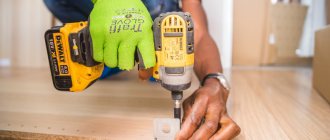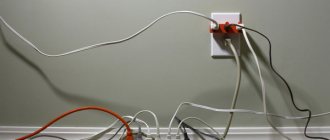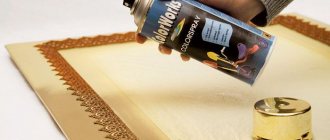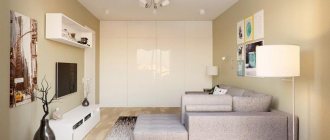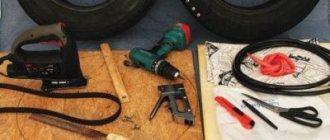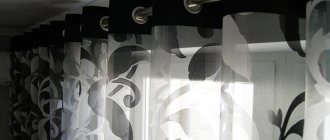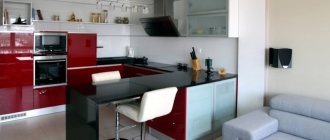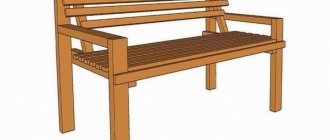Stoletti has been working in the Yekaterinburg market for 17 years. Just imagine that some of you, entrepreneurs, were 8 years old when Dmitry Pokataev was already developing a furniture business. It’s very interesting to know what it’s like to survive three economic crises, not close down, not re-profile, but develop further in the same direction.
What is the most difficult thing in production and what problems do you have to solve every day? What furniture store promotion tools definitely work? Why is it better not to produce furniture now, but to concentrate on sales? Where is the logic in keeping partial records of materials in production?
Read our success story!
— Dmitry, tell us why you got into furniture?
- It is an accident. 17 years ago I managed a shopping complex, was a sublessor and accepted rental payments. I transferred the money minus fixed expenses to the owner-lessor. One tenant did not pay his bills for a long time, I paid the owner for him, and after a while I received a furniture store for the debts. I had never been involved in the furniture business before.
- Wow! So what did you start doing? How quickly did you organize production?
— Together with the store, we “inherited” a partner who made furniture for this salon, as well as sellers. In essence, the business was “packed”, but unprofitable.
— Was there a fear that you wouldn’t be able to sell the furniture you inherited?
— No, we initially planned not just to sell what was in the salon and close it, but to deal with furniture full-time.
There was no fear: we talked to the landlord, paid an increasing rate - 20% of the standard rate - and extended it over a period of three months. I used to do advertising and marketing, so it was easier for me to understand how to get clients. And the competition was quite low.
It seems that everything coincided: the occasion, the time, the place.
— At what point did you realize that “that’s it, business is rushing” and you need to continue?
— There was no skepticism at all. In the first month we sold 4 kitchens, in the next - 10, by the end of the year we reached 25 orders per month, and this included moving to another location.
Promotion of a furniture store. Case Stoletti
— When did you get your website?
— Stoletti — in 2007. Before that, we were called 7 Star Kitchens, and there was another website. If anyone remembers, there was such a cheap Moldovan cognac 7 stars. We didn’t want to be associated with all this, plus we decided that we wanted to make more expensive and high-quality furniture.
We thought out a new promotion concept, rules for working with materials and components. Working within this approach is more expensive, and foreign suppliers appear. This means that the name may not be Russian. They chose “Stoletti” - the domain name was free and was more associated with furniture than the old one: Italian sound and a hint of countertops.
Also, when I Googled “Stoletti”, the word “century” popped up - something eternal and long-lasting. Indeed, there are still clients who have had our furniture since 2007 and look decent.
— How have promotion tools evolved over these 17 years?
— At the very beginning, we attracted clients using standard methods: advertisements in newspapers, magazines and on TV - nothing magical. Promotion on TV at some point was very effective: 600 advertisements for Kitchen 7 Stars per month - and we were heard by the whole city.
Now we spend almost no money on advertising. Yes, we pay for some traffic, but we do it selectively on social networks, once a month - just to show up somewhere.
Our website and domain have existed for a long time, they have been optimized, so people find Stoletti in search, write in chat, and all this allows us to quickly connect clients and our sales managers.
— It turns out that from 2003 to 2007 you lived offline. Now which channel brings in more sales: offline or online?
— We have 3 sources of traffic: website, word of mouth, shopping center. Traffic from the site is a legacy of past years, since now we are not investing in optimization. This is approximately 40-50 unique visitors per day. Word of mouth - clients from clients, recommendations that work great.
Visitors to the shopping center sometimes come not for kitchen furniture - we have two brand sections of household appliances in the shopping center: Teka and Korting - and this is also a kind of magnet. In addition to a kitchen, people also need equipment.
— Are social networks suitable for promoting a furniture store?
- And how! There was a period when Instagram worked great for us thanks to a simple tool - mass liking. Not to say that this is a civilized way of advertising, but it brought clients. We don't do these things now.
What we always do on social networks is build dialogues with clients: we talk about our value. We explain why ours is more expensive: a kitchen costs, for example, 450,000 rubles, while competitors’ prices are 250,000. With the same appearance, but with different materials and components, you can make furniture of completely different levels. We explain this in detail.
It’s clear why direct advertising practically doesn’t work for us.
Additional tool
In addition to the tools described above, additional equipment may be required to carry out work on manufacturing, updating and assembling products.
The furniture stapler will find application not only in the manufacture and draping of upholstered furniture, but also in the production of cabinet objects. Using a fairly powerful mechanical tool, you can nail the backs or bottoms of fiberboard drawers. This device is indispensable when updating furniture items when drapery replacement is required. Preference is given to samples that have a push metal handle and an adjusting screw that allows the use of different sized paper clips.
A hex key for screwing confirmat (euro screws) is a fairly popular hand tool today. It is indispensable for tightening screws with a hexagonal internal slot in hard-to-reach places where it is difficult to get to with a screwdriver or screwdriver. Of course, this accessory is not suitable for regular use. After screwing in a couple of dozen European screws, the hand ceases to “feel” the tool. In addition, modern products are made of soft (unhardened) metal and their edges quickly wear off.
Positioning. Working with assortment in a furniture store
— How do you differ from your competitors?
“We’re small, we don’t have inflated expenses, and we’re mobile. We can very quickly change something according to the buyer’s request. We can take orders that competitors cannot do. Plus experience and image.
— Working with an assortment of furniture. What's your approach?
— We don’t have many product lines: glass kitchens, loft kitchens, Provence, classic.
For some time we closely monitored Moscow exhibitions: you come in November, look at what is on display, understand that in six months this furniture will be popular in Yekaterinburg, and six months later you roll out similar samples. This is how we managed our assortment until 2010.
Then we even stopped going to Moscow - the Internet became better, and it was already possible to look at all the new products in European catalogues, simply counting not six months from the Moscow exhibition, but one and a half to two years after the exhibition in Milan.
In 2013, we introduced glass kitchens to our range when we saw that it was successfully sold in Germany, but in Yekaterinburg no one was really doing this. We took it upon ourselves, and over time we made this type of kitchen more accessible. At the same time, we do not skimp on glass tempering and processing.
— What are your kitchen production times and how do you ensure furniture is produced on time?
— Production time is from 60 calendar days, but it is not always possible to issue the order by the appointed date. Furniture is ordered in a variety of ways and at different levels of complexity, so it is difficult to accurately determine the deadline.
What helps is that our prices are above average. Our clients are usually not very tied to deadlines. For example, people already have an apartment, and they are renovating their second or third apartment in the background. For them, a delay of a month is often not critical. Of course, there are those for whom deadlines are extremely important, but as a rule, clients are loyal to us.
Necessary tool for furniture making
From the variety of carpentry tools, the subject of choice remains tools for screwing, drilling, cutting and measuring.
In the first steps, include in the kit for your own workshop only what is necessary - this will be enough to make furniture yourself:
- electric;
- manual;
- measuring;
- consumables and equipment.
For high-quality and simple work, the list of corded or cordless tools is as follows:
- drill;
- screwdriver;
- jigsaw;
- Grinder.
In this case, the tool does not have to be mains electric.
The modern assortment is widely represented by battery samples.
In the process of gaining skills and moving on to more complex tasks, the list can be gradually expanded.
Drill
A drill is the main component of any furniture making workshop.
In the first steps, you can get by with an electric drill with hammer and screwdriver functions.
The presence of such additional options will allow you to save on the purchase of a hammer drill and screwdriver.
If possibilities allow, then the best choice is a corded electric drill.
Thanks to the impact mechanism, they work with hard surfaces, assemble and install built-in or cabinet furniture.
The rotation speed regulator allows you to change the speed for the desired functions: drilling metal or wood, tightening screws, pulse or impact function.
Screwdriver
A screwdriver is also one of the main specialized “tools” of a carpenter for assembling and producing furniture.
The functionality involves installing furniture fittings, screwing and drilling.
Modern models are equipped with pulse and shock functions, and the introduction of battery technology allows you to organize a convenient workflow even in the absence of electricity.
The keyless chuck allows you to change accessories in an instant to perform various operations.
The two torque speeds are equally useful.
The operating time depends on the battery capacity.
When choosing a screwdriver, you should pay attention to the presence of two batteries - a spare power supply will allow you not to interrupt work while recharging.
Jigsaw
Electric jigsaw - this tool allows you to cut shaped furniture and its parts with high precision.
Used in the following cases:
- cutting of cloths;
- making cutouts for built-in appliances;
- size adjustment;
- figured cutout or rounded catch, etc.
The jigsaw mechanism is designed to adjust speeds and change the inclination of the cutting blade.
For metal work, special files are used.
Grinder
A grinding machine is designed to clean and level a surface or cut line.
It does an excellent job of removing varnish, old paint, or pre-treating the base before applying paintwork.
Measuring instruments
Measuring tools for making furniture yourself:
- roulette;
- metal ruler, at least 1 meter long;
- calipers;
- steel square;
- laser pointer, level or level.
Hand tool
Hand tools for the first experiments in furniture production compare favorably with electric analogues in cost, but lose in performance.
Despite this, some models are now irreplaceable.
In every carpentry you will need:
- hacksaw or saw for wood and metal;
- chisels;
- a set of flat and Phillips screwdrivers;
- pliers, pliers, wire cutters;
- planes, jigsaws, jointers;
- hammer, mallet.
A furniture stapler will come in handy.
It is used for upholstering furniture and installing thin walls made of hardboard, plywood, etc.
Equipment and consumables
One of the important equipment for making furniture is a workbench.
The work table must be equipped with a vice and clamps to securely fix the elements.
The following set of working equipment will be needed:
- wood crowns for holes with a diameter of 20 to 130 mm;
- drills for metal and wood, with a diameter in the range of 2-12 mm;
- Forstner drills for drilling non-through, even holes, for example, for hinges;
- drills with extra-strong hard tips for working with concrete and brick;
- set of bits
Search for employees for furniture production
— Is it easy to find workers for furniture production?
- No, this is the most difficult thing in our business. True, because of the crisis it has become easier - other industries are sagging. You place an ad and immediately receive a lot of responses.
Basically, we work on an artel basis - we attract outside people who make furniture not only for us. It is not at all profitable to keep specialists on staff, since the furniture is diverse, and it turns out that you need to have many diverse workers and pay them salaries.
We try to hire generalists who can work on almost all types of machines: they can make countertops, they can make classic facades, they can paint, and so on.
How can a furniture store survive a crisis?
— You and your company went through all the economic crises: 2008, 2014, and what’s happening now. Did you feel them?
“I don’t really remember, which means there was nothing fatal.” In 2008, we very quickly began to make simple tables and chairs en masse in order to earn at least something. Starter kits began to be shipped to exhibitions and stores - with a 50% prepayment and a two-month deferment. By the way, we immediately connected factoring and achieved a 90-day deferment.
In 2014-2015, it seems, we also did not grieve much. We saw what our competitors were doing - they went to the low price segment, and we decided to go to the high price segment, believing that the “rich” would not disappear anywhere, perhaps they would become a little poorer and would start buying from us, not Italy. And they were not mistaken. We continue to work in the above-average segment and everything is working out.
We have not done anything concrete to overcome the current crisis. We always tried to be prepared for it. We worked on the store’s recognition, its reputation and ensuring that reviews were objective and real. So that looking at them, people would come to us.
Our clients are those who can wait 60-70 days to receive the furniture. This means that the financial flow is stretched, and we do not feel the crisis and cash gaps.
And one of the most important rules at all times is not to let clients down, and to work every day on quality in everything.
What tools are needed to assemble furniture yourself?
Hi all! Even if you are not a professional furniture maker, but rather an amateur, you may still be interested in a tool for assembling furniture.
When buying furniture, in extremely rare cases it arrives already assembled. Basically, these are structural elements that need to be combined with each other. This is how items of upholstered furniture, kitchen furniture, cabinet furniture, etc. are purchased. Here is a set of parts and fasteners. It doesn’t matter whether it is made of chipboard, chipboard, solid wood or even natural wood.
A furniture maker always has a certain set of tools in his arsenal, which allows him to save on the services of assemblers from the store and do everything with his own hands.
If you want to do the assembly yourself, then to make ready-made structures you will need to assemble a specific kit. Some you already have at home, other components are easy to buy at Ikea or similar stores. All tools that may be useful during assembly are conventionally divided into marking and assembly (fixing).
Marking devices
By marking we mean auxiliary tools. There are rarely problems finding them, since the main part is already in your home from the very beginning. Even if you haven’t assembled furniture before, but have repaired, drawn, measured, screwed something, etc.
This section includes universal tools, that is, you will need them in different areas of home activities. There is no need to buy them specifically in order to assemble furniture with your own hands.
- To get started, take a tape measure. Moreover, choose a length of at least 3 m. It will allow you to know exactly what dimensions of a particular product, make an indent, etc.;
- Pencil. Where would we be without him? It is easy to wash, but can be marked. For furniture work, an HB pencil is suitable, that is, with a medium degree of hardness;
- Take a square. Without it, it is difficult to draw clear and even lines. Particularly relevant when working with fiberboard, chipboard and MDF;
- The awl will help in situations where you need to drill surfaces with sheathing, where there is a risk of wrapping around the drill;
- Good old sandpaper. Rubs out uneven surfaces. If you have a ready-made furniture structure, or components made of wood, chipboard and other materials, take fine grain;
- Sharp knife. Better stationery. Copes perfectly with cuts and removing unnecessary elements;
- Jamb-knife. Relevant when cutting PVC furniture edges;
- Classic pliers. Unscrew something, pull it out, etc.
I don’t think there will be any problems finding these components. Especially if you live in Minsk, Moscow or Kyiv.
When you have laid out the markings and prepared the materials for your furniture, it’s time to put everything together.
Now you can move on to the next set, which will be directly involved in the furniture assembly procedure.
